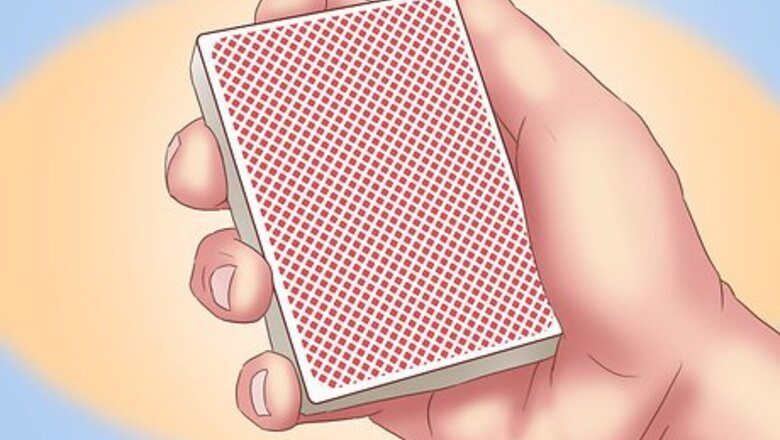
views
Performing the Four Stacks Trick

Grab a deck of 52 cards. For this trick, you need a standard deck of 52 playing cards. This trick is simple and involves basic math. You don’t need any sleight of hand to perform this trick. You will perform this trick by counting out cards into four stacks. Each card is assigned a number value that will determine how many cards you count to after you make four stacks and until you reach your spectator’s card.
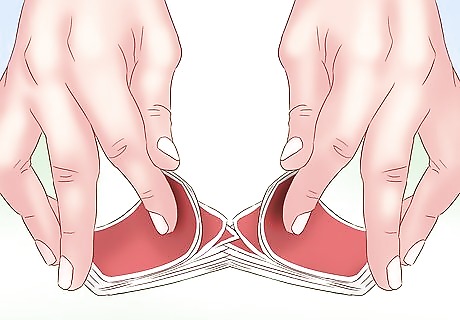
Begin by shuffling the deck. You can shuffle the deck a couple of times and then ask your spectator to cut it if you want. Then count out nine cards. Count off nine cards and separate this pile from your deck. Fan out your nine cards for the spectator. Ask the spectator to take one of the nine cards and memorize it. Don’t have your spectator show you the card.

Gather up the remaining eight cards into a pile and have the spectator place the ninth on top. Then place your pile of nine cards on the bottom of your deck. You want to re-stack your eight cards while the spectator is memorizing or showing the ninth card to the rest of the audience. You do this so that you can ensure your spectator’s card goes on top of this pile.

Explain to your audience that you have enchanted the cards in this deck to speak to you. You will now explain that you will create four stacks of ten cards each. The number of cards in each stack and the card that ends up on top will magically reveal to you the location of your spectator’s card. You can make up a story of how the cards have magically reshuffled in the deck, and will reveal the spectator’s card location to you.

Begin counting down from ten as you place the cards into a stack face up. As you do this, explain that you will count down from ten and if the number you say matches the card you turn over, you will stop adding cards to that stack. Explain that each card is of an equal value to the number on it. Then say that if you count all the way to one without a match, you will lay a card face down on top of the pile to cap it. Also explain that all face cards are worth 10 and any Aces are worth 1. A=1, J=10, Q=10, K=10

Count down from 10 as you place each card face up on the table. If you are counting down and the number you’re on matches the number on the card, stop counting and move onto the next stack, starting at ten. If you begin counting down and you get to the number seven and the card you lay down is also a 7, then that stack is done. Don’t place a face-down card on top of the pile when you get a match. You will use the 7 to help you tally up the number of cards you have to count before finding your spectator’s at the end. If you begin a stack with a face card or a 10, then move onto the next stack. Don’t place a face-down card on top. Likewise, if you get all the way down to one and the last card is an Ace, then that also counts as a match. Don’t place a face-down card on top.

Repeat this process until you have four stacks. Not all stacks will have a face-down card on top. You will use the stacks without face down cards to tally up the number of cards you count from your remaining deck until you find your spectator’s card.

Add up the value of face-up cards. You will now look at the stacks of cards which do not have a face-down card on top and add up the total value. If you have three stacks which found a match, you would add up the total value from the top card on each stack. For example, If your three matches were an Ace (1), 4, and Queen (10) you would add up the value to get a total of 15.

Flip through the remaining cards in your deck. Count out the number of cards equal to your total, 15, from your three face-up cards. As you do this, you can explain that the cards have magically spoken to you, and told you where to find your spectator’s card.

Keep counting out the proper number of cards until you reach the last one. This will be your spectator’s card. Flip the card over. Ask your spectator if this is the correct card.
Turning the Bottom Card Over Trick

Start with the bottom card of the deck upside down. This trick involves a bit of preparation. It’s easiest to start the trick with your bottom card facing the opposite direction as the rest of the deck. If you flipped your deck over, it would look the same. If you are skilled enough at sleight of hand, you can quickly flip the bottom card over after you shuffle the deck. One way to attempt to flip the bottom card after a shuffle is to finish shuffling with an overhand shuffle. Take the last card from your overhand shuffle and flip it back onto the bottom of the deck facing the opposite direction. You have to do this quickly so no one sees. Angle your hands so your audience won’t see the bottom of the deck.
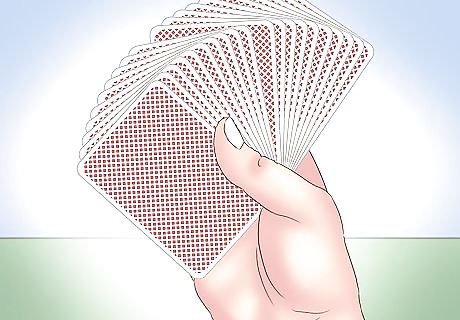
Fan out the cards. With your bottom card facing the other direction, fan out the deck without showing the bottom card. Make sure to fan the cards out more in the middle of the deck. Angle the cards down slightly so your audience mostly sees the tops of the cards.

Ask for a volunteer. Have your volunteer pick a card from somewhere in the deck. If you want, you can run your thumb along the outer edges of the fanned out cards and ask your volunteer to say “stop” at a certain point. When your spectator says “stop”, you ask your spectator to take the card your thumb is on. This gives you a little bit more control so you ensure your spectator doesn’t pick your upside down card.

Flip your deck over as your spectator looks at the card. Ask your spectator to memorize the card and show it to the rest of audience. As soon as your spectator takes a card, you want to re-stack the deck. While your audience is distracted by the card, flip your deck over so the bottom is now the top. During this moment, discretely flip your deck. To help you do this unseen, you can lower the deck a bit. Also, cover the front of it with one hand while you turn it over so your audience doesn’t see what you’re doing.

Ask your spectator to place the card back in the deck. Your deck will now be upside but look normal to your audience. Be careful to keep the deck stacked here so that your audience doesn’t notice that your deck is flipped.

Tap your deck three times. Explain that you are tapping the deck to trigger its magical properties. This will help with the illusion as you prepare to flip the deck. Then explain that you will cause the spectator’s card to magically flip over in the deck. Begin shaking the deck, and while you do, flip the deck back over. This part can be a little tricky as your audience will be focused on the deck. The purpose of shaking the deck as you explain what you are doing is to distract your audience while you quickly flip the deck back over. All of the cards will now be facing the right way except for the bottom card, and the spectator’s.

Fan out the cards to reveal your spectator’s card facing up. Be careful not to show your audience the bottom card. Remove your spectator’s card from the deck and ask the audience to inspect it. You can even have your spectator hold it. While this is happening, if you want, quickly flip the bottom card back over.
Performing the Sweet 16 Card Trick

Count out sixteen random cards from a standard 52 card deck. This trick involves a bit of memorization and is done by how you lay out the cards out in each round of the trick. The first round of the trick has you laying the cards in four rows of four cards each, face up. The second round has you laying the cards in four columns of four cards each, face up. The third round has you laying the cards in four squares of four cards each, face up.
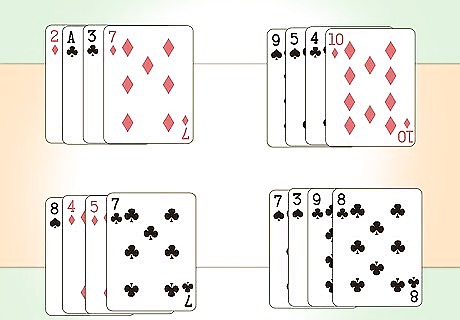
Deal out the cards face up. Create four rows of four cards each. Ask your spectator to pick a card and memorize it. Tell your spectator not to tell you which one it is, but to think about it very hard and visualize the card.

Ask your spectator to tell you which row the card is in. Once your spectator tells you which row the card the is in, quickly memorize the cards in that row. While you do this, keep talking to your spectator. If you want to make it a bit more interesting, you can wager a bet that you will be able to read your spectator’s mind and eventually find the correct card. Gather up the cards. Pick up the row that your spectator’s card is in first. Be careful to keep the cards in the same order for each row. Stack the cards face up on top of one another. You will have your spectator’s card in the bottom four cards with the cards face up. Then turn the deck of sixteen over so your spectator’s card is now in the top four.

Deal the cards out again into four columns of four cards each. By separating the cards into columns for this round, you can quickly find your spectator’s card. Because you previously memorized the row that your spectator’s card was in, and have now separated that row into different columns, each of the cards from the spectator’s row is now in a new grouping of four. Furthermore, since your spectator’s card is one of the first four cards you laid out, you will be able to identify it easily.

Ask your spectator which row the card is in again. Though you laid the cards out in columns, you still want your spectator to identify the card by the row. You will now be able to find the card by the column. However, don’t reveal that you know which card it is just yet. You can identify your spectator’s card because it will be the top card in whichever row your spectator points to. Since you laid the cards out by columns in this round, the four cards from the first row will now be at the top of each new row.

Gather the cards up just like you did before, starting with the row your spectator’s card is in. Gather the cards face up again, starting with the top card of each row. This way, your spectator’s card will be on the bottom of your deck. As you gather up all of the cards, flip the deck over in your hand again. The cards should now be facing down. Now explain that you will separate the cards into groups of four face down. Say that you bet you can use your magical powers to read your spectator’s mind to find the card.

Deal the cards out, face down into four groups of four cards each. Ask your spectator to pick a group of cards. You now know, that because your spectator’s card is the first card you put down, where it is. If your spectator chooses the group of cards that the card is in, take the other three groups away. If your spectator chooses a different group, remove only that group.

Ask your spectator to choose another group of cards. Assuming your spectator hasn’t picked the group with the card in it. Repeat this process until the group with the card is the only one left, or until that group is picked. As soon as the group with your spectator’s card is chosen, remove all other groups.

Ask your spectator to pick an individual card. Just like with the groups, if your spectator picks the chosen card, remove the others. Otherwise, eliminate one more card until there are two left. If the first card your spectator picks is the chosen card, bet that you can identify it before you flip it over. Say that through your magical abilities you are able to direct your spectator into picking the card. Then flip the card over to reveal that you guessed it correctly. If you get down to two cards, you can bet your spectator that you not only know which card is the chosen card, but you can also identify what it is. Announce the card and flip it over to reveal you are correct.
















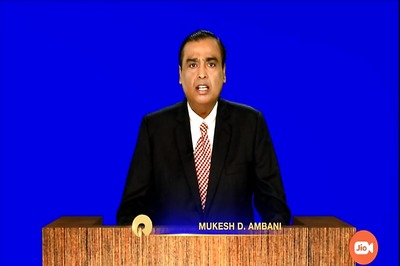



Comments
0 comment